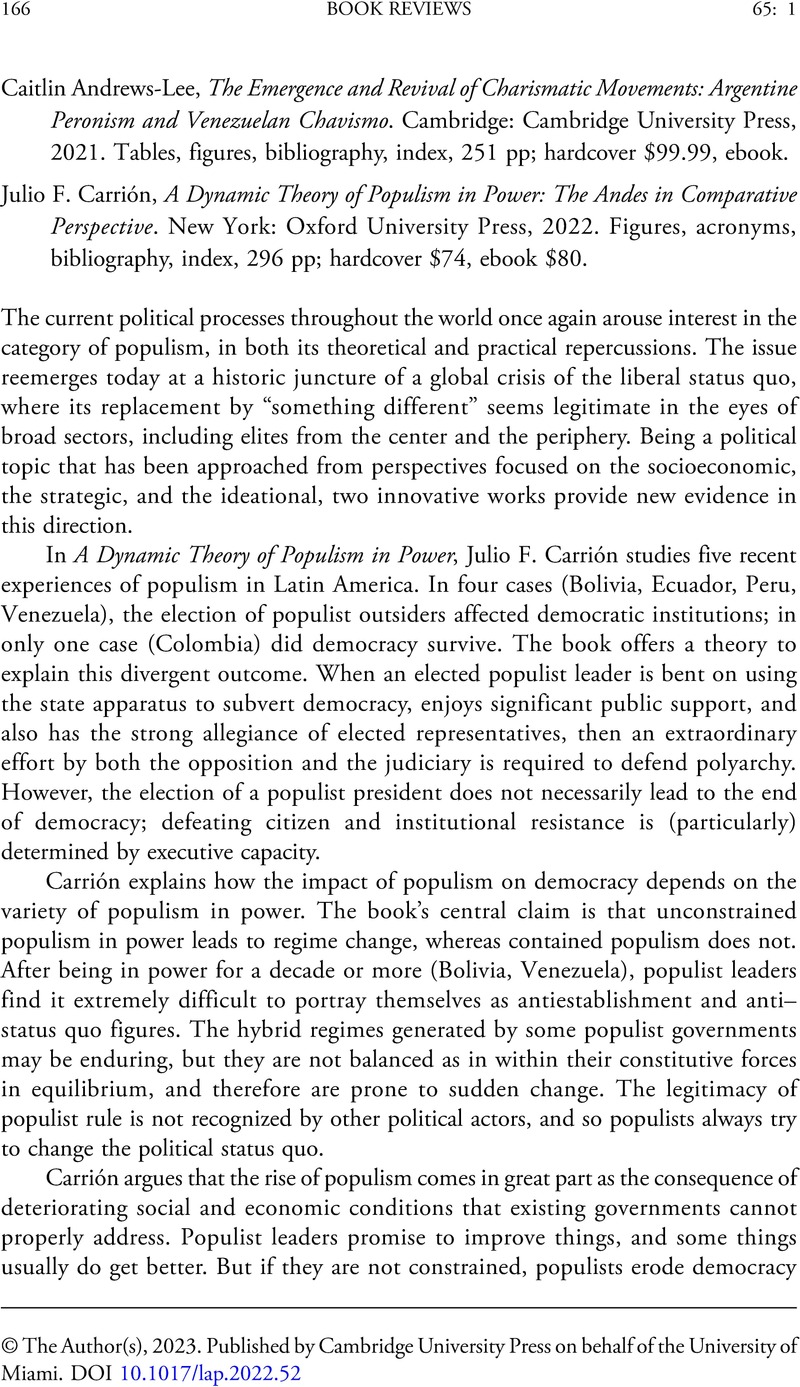No CrossRef data available.
Article contents
Caitlin Andrews-Lee, The Emergence and Revival of Charismatic Movements: Argentine Peronism and Venezuelan Chavismo. Cambridge: Cambridge University Press, 2021. Tables, figures, bibliography, index, 251 pp; hardcover $99.99, ebook. - Julio F. Carrión, A Dynamic Theory of Populism in Power: The Andes in Comparative Perspective. New York: Oxford University Press, 2022. Figures, acronyms, bibliography, index, 296 pp; hardcover $74, ebook $80.
Review products
Caitlin Andrews-Lee, The Emergence and Revival of Charismatic Movements: Argentine Peronism and Venezuelan Chavismo. Cambridge: Cambridge University Press, 2021. Tables, figures, bibliography, index, 251 pp; hardcover $99.99, ebook.
Julio F. Carrión, A Dynamic Theory of Populism in Power: The Andes in Comparative Perspective. New York: Oxford University Press, 2022. Figures, acronyms, bibliography, index, 296 pp; hardcover $74, ebook $80.
Published online by Cambridge University Press: 16 March 2023
Abstract
An abstract is not available for this content so a preview has been provided. Please use the Get access link above for information on how to access this content.

- Type
- Book Review
- Information
- Copyright
- © The Author(s), 2023. Published by Cambridge University Press on behalf of the University of Miami


